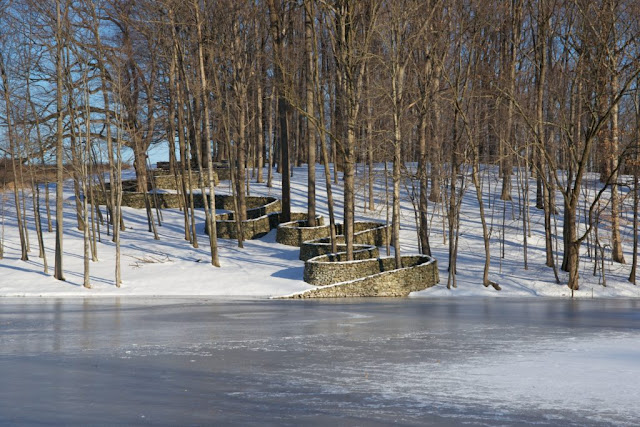One of the smaller regrets in my life is that when I was
unemployed in Sheffield in the 1980s I turned down the chance to become an apprentice
dry stone waller. How very different
life might have been. Maybe – and I realize this is very, very
unlikely – I could have ended up as land artist in the mold of Andy Goldsworthy.
There’s a new documentary about him, titled Leaning Into the Wind, and in the
trailer he says, “There are two ways of looking at the world. You can walk down the path, or you can walk
through the hedge.”
Does anybody still use that phrase “dragged through a hedge backwards”?
My mother used to say it about me when I
was looking particularly disheveled, but as I used to point out, if you’re
pulled through a hedge backwards you’re going to look rather better than if
you’re pulled through it forwards.
Andy
Goldsworthy has something in common with walking artists like Richard
Long and Hamish Fulton, but as far as I can tell he doesn’t really use walking
as part of his practice. However, since
he’s usually working outdoors, making site specific sculptures, then I suppose
he must do a certain amount of walking to get to and from the sites. The piece below at Storm King, titled Storm
King Wall is a length of dry stone walling
that runs to 2,278 feet, so a certain amount of walking is required just to
get from one end of it to the other.
Actually it’s not even that
simple – the wall disappears, as it were, into water and emerges on the other
side, so unless you can walk on water a detour is involved.
I’ve also walked around a
Goldsworthy in the Yorkshire Sculpture Park, this one, called Hanging
Trees:
I know I also saw his Garden of Stones at The Museum of Jewish Heritage
in New York but as far as I can remember, at the time I went there you weren’t
allowed to walk in it.
The image below on the museum website suggests you can walk there now, though obviously not very far.
As far as I can see, there's an absence both of paths and hedges.






